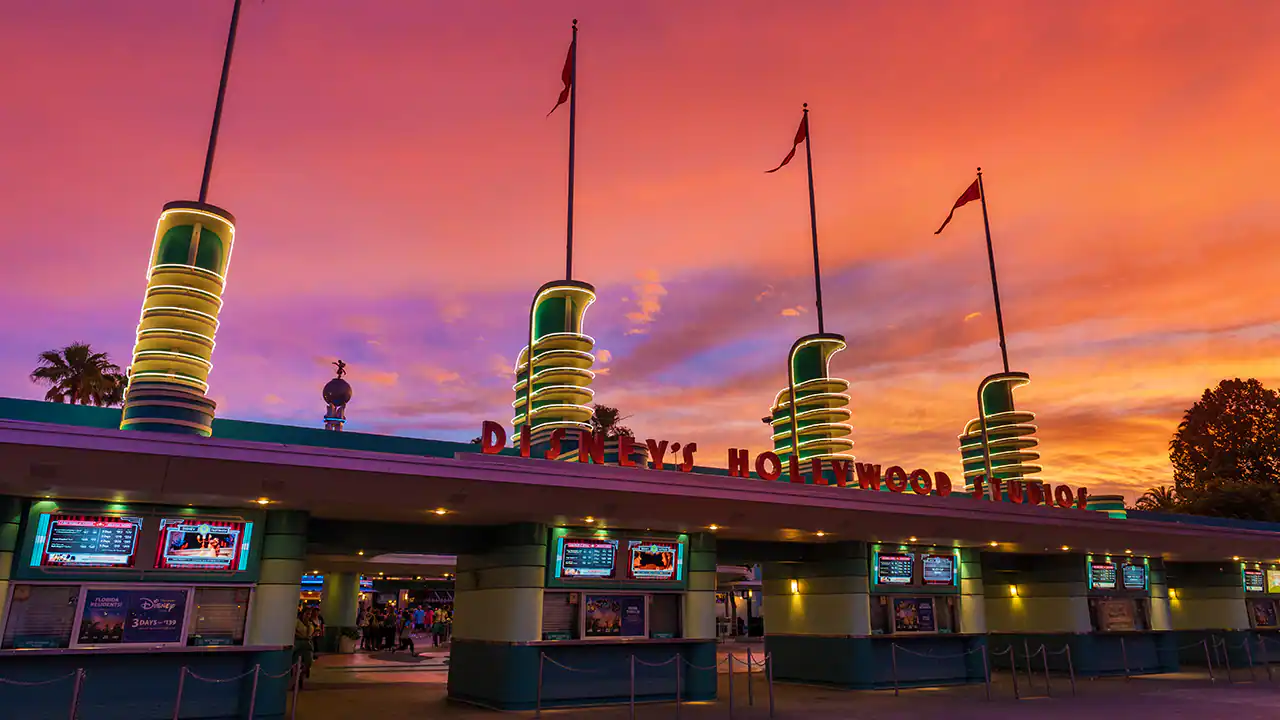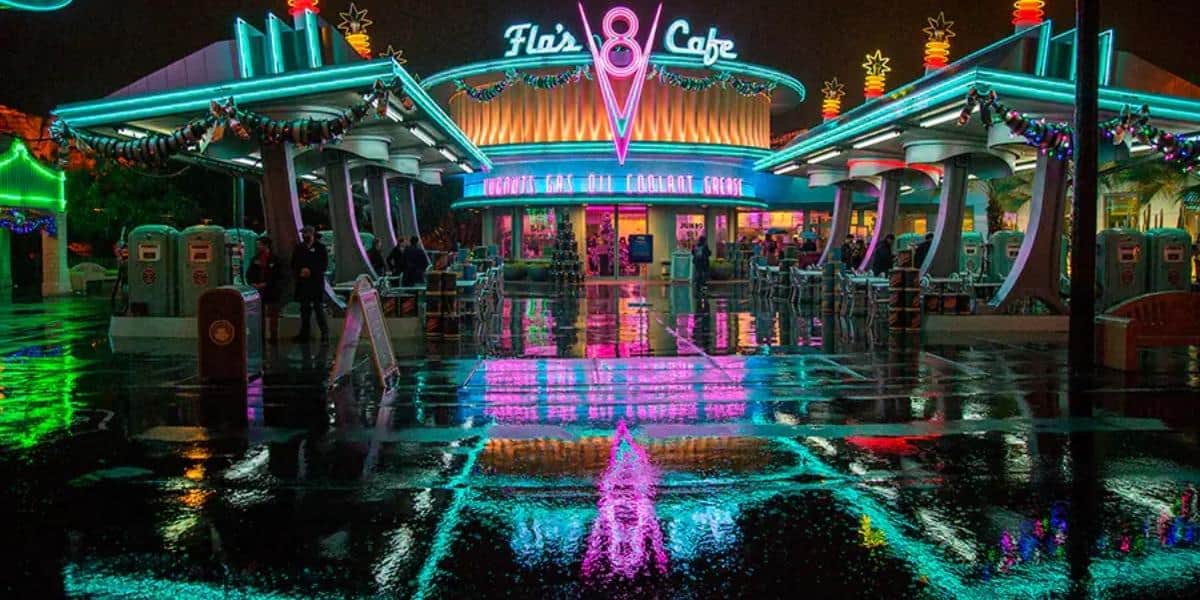
For anybody looking to get into the theme park industry and the field of theme park design – or anybody just interested in the hard work that goes into the “magic” of our favorite Parks, attractions, and experiences – the definitive, must-read book for the field is David Younger’s fantastic Theme Park Design & The Art of Themed Entertainment.
Younger has brought together decades of accumulated knowledge from the masters of the craft to inform his readers on every aspect of theme park and themed attraction design, down to the smallest detail that might never be noticed by an average visitor. However, that isn’t to say he doesn’t also look at the bigger picture, theorizing about the very nature of theme park design as an artform.
One of the most interesting parts of the book for a Disney Parks fan, then, is the breakdown of design styles that have been used, historically and presently, to create theme parks and attractions. You may know that you are particularly drawn to certain types of rides over others, but you might not know exactly why that’s the case. But by better understanding these five theme park design styles, as described by Younger, you may gain a greater insight into how to spot them in your favorite Walt Disney World Park.
RELATED: So You Want to Be An Imagineer… Read This First!
Let’s explore these five design styles and use them to help us understand just what it is we love about the Disney Parks!
Traditional Style Design
Younger’s description: “Traditional Style Design was the first theme park design style, epitomized by the work of Disneyland’s first generation Imagineers (ultimately culminating in two of Disney’s premier attractions: Pirates of the Caribbean and the Haunted Mansion. . . . It can be identified by its preference for Immersive Design, Amalgamated Lands, and Experiential Story, but came about in a time before the theme park was defined as a place of elaborate rides, instead pulling inspiration from many forms of spatial attractions, including living museums, World’s Fairs, amusement parks, and zoos. It has largely been superseded by New Traditional Design.”
Where to find it at the Disney Parks: As Younger explains, the epitome of this form is Pirates of the Caribbean and the Haunted Mansion – immersive rides that create an atmosphere and a story space without necessarily presenting a clear narrative arc or making Guests explicit characters in the story. However, earlier iterations of the Traditional style can be seen at most of the early Disneyland attractions, such as Mr. Toad’s Wild Ride and Snow White’s Scary Adventures.
RELATED: Who Are All Those Ghosts in the Haunted Mansion?
Presentational Style Design
Younger’s description: “Presentational style design is a distinctly modernist form of design, that traces its most primitive form to the opening day of Tomorrowland, and the inspiration it took, in amalgamating various spatial entertainments, from the draws of the World’s Fairs – giant pavilions devoted to non-fiction stories based around technology, industry, and culture. The Presentational style, still closely associated with expo design to this day, often draws its content from real-world subjects, meaning designers often veer away from representation. . . . Instead, the Presentational style relies heavily on screen-based attractions that can show images of the real thing, typically designed with Update-ability in mind to keep things fresh, and then making use of abstraction and symbolism as the means of connecting the various elements together, complementing the theme rather than copying it. This abstraction then continues outside the attraction, where show buildings do not try to hide their architecture with facades, but instead use modernist and postmodernist forms that imply their subject matter through form.”
Where to find it at the Disney Parks: EPCOT, EPCOT, EPCOT. Think of the modernist/postmodernist designs that define Spaceship Earth and the Imagination pavilion or the screen-based attractions in the World Showcase. This was especially true when EPCOT first opened, and most attractions were directly presentational and pedagogical in nature, even the rides in Future World, such as Horizons and World of Motion.
RELATED: What Is EPCOT, Anyway?
Postmodern Style Design
Younger’s description: “The Postmodern style can best be understood as a reaction to the Traditional style, trying to differentiate itself from the Disneyland model. This can be done in a number of ways, but generally involves non-immersive designs set in the here and now, heavily using Popular Design, IP in non-diegetic ways, celebrities, peaks behind the curtain of how the traditional theme park illusion is accomplished, and a general aim to be ‘more cool’ than what some might call an over-saccharine Disney style.”
Where to find it at the Disney Parks: Though Younger dates the origins of the Postmodern style to Universal Studios Hollywood’s conversion from a studio tour into a theme park in the early 80s, the success of that park’s “cool” factor led to the style becoming implemented by Disney to appeal to the teenage audience it was losing to its new competitor. Disney’s MGM (later Hollywood) Studios and Disney’s California Adventure were both initially Parks designed almost entirely to be Postmodern, eschewing immersion for a showy exterior that tried to move away from the sentimentalism traditionally associated with Disney. By and large, though – as the changes to Hollywood Studios and DCA over the years show – this style didn’t suit the Disney audience, who largely wanted the immersion and sentimentality that Disney had perfected.
RELATED: 5 Movies You Need to Watch Before Visiting Disney California Adventure
Themed Amusement Park Style Design
Younger’s description: “The Themed Amusement Park design style describes the approach of using the techniques and theatricalities of themed design to enhance amusement park attractions while never suggesting the attraction is anything other than its ride system. Instead of asking the guest to suspend their disbelief, any story remains highly experiential . . . [creating] an atmosphere, imagery, and, most definitively, a brand that serves to differentiate the attraction system from others of the type. . . . The Themed Amusement Park style came about for three key reasons: economic constraints, a rejection of immersion, and an aesthetic preference for the iron ride, especially the roller coaster.”
Where to find it at the Disney Parks: The Six Flags franchise of regional parks really championed this style of theme park attractions, as their financial model allowed for epic roller coasters but not for elaborate theming and show elements to accompany those coasters. The steel structures of the roller coasters themselves thus became the hallmark of the style. At Disney, where the aesthetic preferences and economic constraints were different, the Themed Amusement style never quite took off, only appearing here and there for certain coasters and areas, such as Goofy’s Sky School at California Adventure and the kitschy “Chester & Hester’s” area of DinoLand U.S.A. at Disney’s Animal Kingdom. Notably, the latter was very controversial amongst Disney fans, who hated the “amusement park” look that Walt had deliberately wanted to avoid at Disneyland.
RELATED: 5 Disney Lands That Went Extinct Way Before DinoLand U.S.A.
New Traditional Style Design
Younger’s description: “New Traditional Style Design can be considered an evolution of the Traditional style in that it continues to want to immerse the guests in fictional worlds. However, unlike the Traditional style which draws its sources from an amalgamation of spatial entertainments, the New Traditional style has identified what works best in a theme park and pursued it – big themed attractions, rich with detail, and strict with intrusions . . . It arose from a situation in which Experiential Story gave way to Explicit Story as designers became focused on story as their differentiation tool and were given the split-second show action technology that could deliver story points effectively. It is also linked with greater use of IP, the use of Specific and IP lands, and even the use of techniques such as theme aging, free of the need to compete with the amusement parks.”
Where to find it at the Disney Parks: Most attractions that have been added to the Disney Parks in the 21st century – especially those which came about in response to the runaway success of the New Traditional style used to make The Wizarding World of Harry Potter such a huge success at Universal Studios – have been in the New Traditional Style. The entirety of Cars Land, the World of Pandora, and Star Wars: Galaxy’s Edge are all New Traditional Style, as are the upcoming IP-specific lands in many of the international parks. The focus on immersion and telling an explicit story that puts the Guest into a specific role is a hallmark of the style, and the current obsession with immersion is what dominates most theme park design today.
RELATED: Galaxy’s Edge, Galactic Starcruiser & the Limits of Immersion
For now, the New Traditional style is the definitive theme park style . . . but this might not be the case forever, which is something that any Disney Imagineer, member of Universal Creative, or other theme park designer must keep in mind. As Younger concludes his tour of these styles by noting, “New Traditional design is certainly the most successful, but designers should consider whether, with too much success, it at some point becomes bland, or misses opportunities for differentiation through alternative and even original stylistic choices.”

 DisneyTips.com Your Guide To A Great Disney Vacation
DisneyTips.com Your Guide To A Great Disney Vacation








